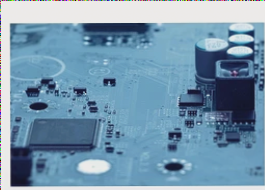The leading enterprises possess the ultimate sales channels, hold product brands, and demonstrate design capabilities, alongside some production capabilities. In today’s globalized market, many top companies distribute their products worldwide rather than limiting themselves to specific regions. Furthermore, these top companies are globally distributed. The second-tier companies comprise ODM or PCBA contract labor and material suppliers, contributing to product design and assembly. These second-tier companies may also establish their own brands for certain product categories, occasionally leading to competitive dynamics with the top-tier companies. Third-tier companies supply parts or components necessary for the manufacturing processes of the second-tier firms, while the fourth-tier companies generally serve as suppliers to the third-tier, creating a complex web of supply and procurement relationships.

Next is products. Apart from a few leading companies focused solely on design and sales, manufacturers at all levels offer a vast array of products, with the number of offerings increasing as one moves down the supply chain. A level four company may have thousands of products, and product complexity generally rises with the company’s position in the supply chain. Products are increasingly leaning towards customization, resulting in a higher degree of personalization at higher company levels, which consequently reduces the unit variety in batches.
The third aspect is planning. For most firms, production schedules are driven by customer orders (BTO). Consequently, procurement and material preparation plans also hinge on these orders. Given the product diversity, formulating production plans is quite complex. Customer order frequencies fluctuate, leading to deviations during implementation, which means even with a well-defined SMT patch processing plan, production may not follow the schedule entirely. Similarly, capacity and material requirement planning present significant challenges in both development and execution.
The fourth element is the PCBA production process. The numerous production tasks complicate process control, and substantial data collection, maintenance, and retrieval tasks are required. The production lines can vary—ranging from assembly line, work center, and work unit types, to hybrid configurations (incorporating assembly lines or work units within work centers)—and may differ across various stages of the same product’s manufacturing within a single enterprise. These four configurations often necessitate outsourcing during production. The manufacturing speed of finished products is influenced by both in-house semi-finished products and external items. With the variety of products and numerous non-standard items, equipment and labor must exhibit sufficient flexibility. Various factors, including materials, personnel, equipment, and tools, frequently intersect within the manufacturing process, directly impacting product quality, which remains challenging for companies to control.
The fifth concern is PCBA cost calculation. Raw materials, semi-finished products, finished goods, and waste are constantly being moved in and out of the warehouse, making cost calculations intricate. Accurate cost collection and allocation are essential throughout the production process. In manufacturing, most costs, apart from direct materials, are amortized, complicating efforts to control overall manufacturing costs. It is crucial to analyze the discrepancies between actual and standard costs from various perspectives.
—
If you need further adjustments or details, feel free to ask!



